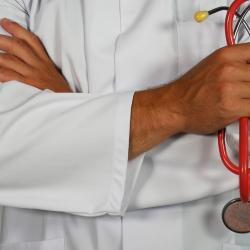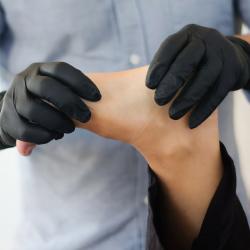How Long Does It Take to Recover from a Breast Augmentation Surgery?
Breast augmentation is a surgical procedure that changes the size and shape of the breasts. A breast augmentation may provide patients with a number of potential benefits, including:
- Boosted confidence and self-esteem
- Achieving one’s desired look and aesthetic
- Aesthetic improvements following significant weight loss
- Restoration of the breasts following tissue loss from a lumpectomy or mastectomy
When performed by an experienced, board-certified plastic surgeon, breast augmentation is a procedure with a relatively low risk of complications and a manageable recovery timeline. Nonetheless, a breast augmentation is still a surgical procedure, and patients may want to know what the recovery process will look like.
Here is a quick guide to what you can expect during the recovery process for a breast augmentation.
What to expect after a breast augmentation
Every individual’s body is different, and timelines for recovery may vary depending on the methods used in your procedure and other health factors. Most patients can expect to return to work and most regular activities within a few days and to make a full recovery within about four to six weeks.
24 hours after surgery
Most patients are able to return to their home or another comfortable recovery location within a few hours of their procedure. During this time, it is normal to experience some soreness, fatigue, and swelling. As a general rule, it is best to have a trusted adult with you to help provide for your needs and ensure your comfort as you rest.
Your plastic surgeon should provide you with a specialized, custom-fit surgical bra to support your breasts and promote healing during the recovery process. They will also prescribe you medications to lessen any pain and discomfort you may be feeling.
1-7 days after surgery
You can expect to be able to return to work and most of your regular activities after the first few days. However, you may still experience some lingering pain and discomfort, and it will be important to carefully follow the activity restrictions recommended by your plastic surgeon.
During the first few days, you will want to refrain from lifting your arms above your head, and it is important to avoid heavy lifting or strenuous exercise throughout the first week.
Weeks 2-4 after surgery
By the end of the second week, most patients will be cleared by their plastic surgeon to resume lower body exercise such as walking or spinning, although strenuous upper-body exercise should still be avoided. During this period, you can expect any residual swelling to subside and for bruises to begin to fade.
After four weeks, you may be cleared to return to some exercise that involves the upper body, such as yoga, but you will want to avoid lifting anything heavier than ten pounds for at least six full weeks, to ensure your body has the fullest possible window for recovery.
Barring any unusual complications, most patients are fully recovered within four to six weeks.
Possible complications
When performed by an experienced plastic surgeon, a breast augmentation is generally a safe procedure, but there is still some risk of complications.
Potential complications during the breast augmentation recovery process include:
- Capsular contracture (the development of tight, hardened scar tissue around the implant)
- Movement of the implant after placement
- Implant rupture
- Infection
- Changes in breast or nipple sensation
Your plastic surgeon should offer complimentary follow-up appointments to assess your recovery and address any potential complications. If you notice signs of any of the above complications, it is best to get in touch with your plastic surgeon as soon as possible.
Tips for recovery
Carefully following your surgeon’s post-operative instructions is the best way to ensure your recovery goes as smoothly as possible. In particular, you should wear the specialized supportive bra provided by your plastic surgeon and refrain from any kind of strenuous physical activity until you are cleared to do so.
Eating a healthy diet and staying hydrated can also speed your recovery by ensuring your body is receiving the nutrients it needs to heal. Because smoking can reduce blood flow and interfere with your immune system, it is best to quit smoking prior to having a breast augmentation and refrain from smoking throughout the recovery process.
Choosing your surgeon
If you are considering a breast augmentation, you should look for an experienced plastic surgeon who is certified by the American Board of Plastic Surgery. An ABPS-certified plastic surgeon will have the rigorous training and experience needed to help you achieve your personal goals for the procedure and guide you through the recovery process.
Your plastic surgeon should also have an extensive portfolio of before and after photos, so you can see their past work before deciding to work with them. Finally, you should make sure that they offer complimentary follow-up visits during the recovery process so that they can monitor your recovery and address any potential complications that may arise.






